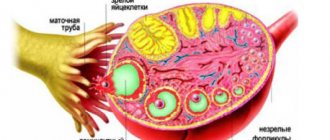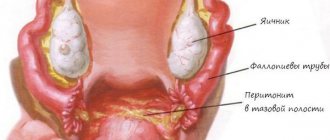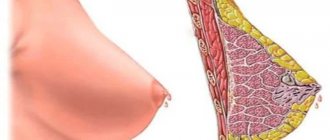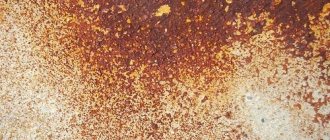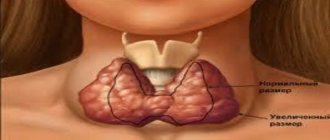Reasons for development
Even despite the wide possibilities of modern medicine, doctors still cannot accurately determine the causes that provoke the appearance of PMS. They name only factors that can increase the likelihood of the appearance of a cyclic symptom complex, these are: • childbirth; • abortions; • emotional stress; • various kinds of diseases; • hormonal changes; • metabolic disorders; • endocrine diseases. Due to the fact that the exact causes of PMS in women are unknown, it is difficult to combat this condition. And yet, today there are numerous ways to improve the well-being of patients during premenstrual days.
Diet for a PMS patient
Women should also eat properly during PMS. Nutritionists recommend lean boiled beef, rabbit, turkey, dried bread, low-fat fish (perch, pike, cod), any cereals, herbs, vegetables (with the exception of sorrel, radishes, garlic, onions, radishes).
Cottage cheese, kefir, milk, low-fat cheese, soft-boiled eggs are useful... The preferred drinks are herbal teas, rosehip decoction, juices from vegetables, fruits... For sweets - honey, marmalade, marshmallows...
The list of prohibited foods includes strong black tea, coffee, cocoa, alcohol, chocolate, hot sauces, mustard, horseradish, pepper, lard, smoked foods, as well as all fatty, spicy and fried foods. Diet: 5 times a day in small portions.
Clinical manifestations
To understand in what situations PMS occurs, it is necessary to carefully study its characteristic symptoms. Of course, premenstrual syndrome manifests itself in every woman with different signs, but we can highlight the most common and common of them: • tense emotional state and anxiety; • mood swings; • increased irritability; • depressed mood; • increase or decrease in appetite; • disturbance of sleep and concentration; • increased sensitivity to sounds and smells; • headaches or dizziness; • feeling of pressure in the eyeballs; • pain in the heart area; • increased fatigue; • bloating and nausea; • swelling of the mammary glands; • pain in joints and muscles; • numbness of the limbs; • violation of defecation processes. Depending on how many symptoms a particular woman exhibits, we can talk about a mild or severe form of PMS. In the first situation, 3-4 signs from the list above will occur. In severe forms there are 5-12 symptoms. It should be noted that doctors distinguish three forms of PMS in women: compensated, subcompensated and decompensated. In the first case, the syndrome does not develop, in the second, the severity of the symptoms increases over time, in the third, even after the onset of menopause, all clinical manifestations persist for a long time.
Remedies for PMS
The prescription of drugs depends entirely on the group being diagnosed and the form of the disease itself. In this case, the severity of the violations themselves must be taken into account. For example, homeopathy for PMS is relevant for milder forms of manifestation of several characteristic symptoms. In such cases, a medicine with herbal ingredients may also be prescribed. With increased anxiety, sedatives are more effective. For general strengthening, vitamin complexes and magnesium preparations can be used.
When observing a mild degree of the disease, treatment of PMS can be carried out using drugs such as:
- Magne B. Taking this medicine helps relieve nervous tension and eliminate painful migraines, discomfort in the lower abdomen and muscle spasms. The drug is prescribed for the syndrome and to reduce swelling.
- Mastodion. The drug belongs to the class of homeopathic therapy and should be taken strictly as prescribed by the doctor. The main effect of the components is aimed at relieving mental stress, normalizing the menstrual cycle, and eliminating severe headaches.
- Cyclodinone. The drug helps get rid of PMS due to the dry extract of twig fruit. It is with its help that the process of producing sex hormones is regulated. Herbal components are also relevant for menstrual irregularities and pain in the chest area.
- Remens. One of the effective homeopathic remedies, which is available both in drops and tablets. With its help, you can reduce the abundance of discharge, restore the body’s usual menstrual cycle, and also significantly reduce the intensity of the psycho-emotional manifestation of the disease itself.
If PMS is accompanied predominantly by nervous symptoms and causeless anxiety, then the disease must be treated with sedatives, which include:
- Glycine is a remedy that allows you to improve the functioning of the brain and thereby remove excessive anxiety and nervous tension.
- Peony extract, which allows you to get rid of fears and calm your own anxiety, but is not recommended for people who require meticulous attentiveness, concentration and quick reaction.
- Preparations with valerian, thanks to which you can relieve irritability, calm nerves and even improve sleep.
- Sedavit, which is another method of drug treatment for PMS based on herbal properties and vitamins. In addition to normalizing sleep and eliminating the obsessive feeling of fear, the drug has a slight antispasmodic property.
Each of the drugs has soybean administration characteristics and a list of side effects. That is why the attending gynecologist should prescribe a list of medications and the order of their administration.
Pain pills
The use of painkillers is determined by the need to eliminate or at least reduce the degree of discomfort. It is in such cases that it is customary to prescribe anti-PMS tablets made with paracetamol, ibuprofen or aspirin. Analgesics such as aspirin are often found in doctor's prescriptions. Depending on the nature of the pain, the attending physician may recommend antispasmodics. In the general list of drugs in tablet form, the use of which is aimed at reducing bothersome pain and general discomfort, it is worth highlighting Nurofen, Piroxicam and Naproxen.
The most popular way to relieve pain in the lower abdomen is to take a drug such as No-shpa. Papaverine and Drotaverine are proven effective painkillers with a wide range of effects on the body.
Taking the medications themselves is usually limited to 1 - 2 tablets, which can be taken no more than 3 - 4 times a day. The total duration of the fight against disturbing symptoms should not exceed 4 – 5 days. If the degree of pain does not decrease or the pain does not stop completely, it is necessary to consult a doctor and adjust further treatment. PMS should be treated with antispasmodic drugs with extreme caution when diagnosing liver and kidney diseases, as well as in the presence of gastric bleeding and hypertension.
Hormones and antidepressants
Increased irritability or, conversely, depression, which manifests itself to a more severe degree, is a reason to take antidepressants for PMS. The sedatives used in this case are effective not only in cases of increased irritability and anxiety, but also in cases of panic attacks and manifestations of uncontrolled aggression.
A drug made from plant extracts best calms the nervous system. Non-hormonal drugs that can be purchased at a pharmacy without a doctor's prescription include Deprim and Persen. More serious disorders in the functioning of the nervous system should be treated only under the supervision of a doctor. This is especially true for the need to choose a drug that calms the nerves for premenstrual dysphoria. As a rule, we are talking about taking antipsychotics, self-medication with which can only aggravate the situation, provoking addiction.
To relieve PMS, your doctor may prescribe hormonal drugs such as Yarina, Logest, Zhannine or Rigevidon, which are also classified as contraceptives. The use of drugs is carried out only under the supervision of a doctor.
Diagnostic methods
In this situation, diagnosis turns out to be quite difficult. It is difficult to find laboratory and instrumental methods that would help make a diagnosis of premenstrual syndrome. Basically, doctors focus on the clinical picture and information provided by the patient herself. Doctors may also recommend that a woman keep a self-observation diary. Here, over the course of two or three cycles, you need to indicate all violations in the general health and condition of the body. Additionally, they can examine the blood for the level of hormones: estradiol, progesterone and prolactin. This makes it possible to establish the form of premenstrual syndrome. If a woman often experiences headaches or fainting during PMS, she may be recommended to undergo an MRI or CT scan of the brain. An EEG is also performed if indicated. If swelling of the mammary glands is observed, they may be referred for a breast ultrasound and mammography to rule out any pathologies. Additionally, it is recommended that you undergo examination by highly specialized specialists, such as a neurologist, cardiologist, endocrinologist or psychiatrist. The more detailed and broader the diagnosis, the more accurately it will be possible to establish a diagnosis and prescribe effective treatment.
PMS with chest pain
Cyclic breast pain (also called cyclic mastodynia or fibrocystic breast pain) is common during PMS. Symptoms are as follows: breast enlargement, lumps, cysts, breast warmth, nipple pain, nipple discharge. Fibrocystic lump-shaped growths can be scary, but they do not directly lead to breast cancer. The greatest danger is the possible camouflage of already dangerous tumors by these formations - this requires a doctor’s assessment during examination.
| Product | Description | How it works? | Application |
| Iodine, 59 ml | Iodine is the best treatment for chest pain. The best type of iodine for the mammary glands is molecular iodine (I2). Compared to iodide, I2 is absorbed more slowly into the thyroid gland and faster into the mammary glands. [6] What makes I2 safer for the thyroid and more desirable for chest pain. | Iodine stabilizes and suppresses estrogen receptors. Breast tissue has a large number of estrogen receptors, so it requires a lot of iodine. Iodine therapy has been demonstrated to improve fibrocystic lesions [4] and reduce the risk of breast cancer. [5] It also has a diuretic effect, which may relieve premenstrual fluid retention. | Any type of iodine can be harmful to the thyroid gland, so take no more than 500 mcg (0.5 mg) unless accompanied by a doctor. Consuming iodine in very large quantities can worsen acne. |
Vitex is another reliable treatment for premenstrual breast pain. It can reduce formations and pain in just 2 months of use. [7] More information about Vitex .
Treatment methods
Treatment of premenstrual syndrome can be medicinal and non-medicinal. If we start with the latter, women are recommended: • herbal medicine; • aromatherapy; • physiotherapy; • psychotherapy; • compliance with the work and rest regime; • moderate physical activity; • yoga or meditation. The treatment program also includes a diet. In the second half of the menstrual cycle, doctors recommend excluding chocolate and coffee, foods rich in carbohydrates, and alcoholic drinks. It is also advised to reduce the amount of sugar and salt consumed. If we talk about drug treatment, it includes: • sedatives; • vitamin complexes; • hormonal drugs. Medicines are selected individually, depending on how premenstrual syndrome manifests itself, as shown by the results of the examination and laboratory tests.
PMS with fatigue
To treat premenstrual fatigue, you first need to understand why you have it.
Inflammatory fatigue
A common cause for premenstrual fatigue is inflammation due to falling progesterone levels (remember, progesterone suppresses inflammation). With this type of fatigue, you feel a bit like the flu, with sore muscles and a sore throat. Histamine intolerance also plays a role in this type of premenstrual fatigue. The best solution is to eliminate cow's milk products from your diet and take anti-inflammatory supplements (magnesium, vitamin B6, zinc).
Lethargy associated with the hypothalamic-pituitary-adrenal (HPA) axis
Another cause of premenstrual sluggishness is HPA axis dysfunction or a problem with your stress response system. Losing progesterone towards the end of your cycle can destabilize your HPA axis and worsen the symptoms of adrenal fatigue. With this type of pre-period fatigue, you feel anxious and stressed. The best course of treatment: magnesium + vitamin B6 + herbal adaptogen such as Rhodiola or ashwagandha.
Sleep problems
Another cause of premenstrual fatigue is insomnia , which you may have experienced during periods of complete drop in estrogen and progesterone levels. Both hormones have a direct hypnotic effect, so their loss can disrupt sleep. [17]
Special Topic: Hypnotic Effect of Progesterone
Progesterone induces sleep so deeply that it can be detected on an EEG or brain wave study. For example, in the days immediately after ovulation (when progesterone levels are highest), women's devices showed more sleep spindles (waves that indicate the onset of deep sleep). [18] Conversely, women taking oral contraceptives (who lack progesterone) showed fewer sleep spindles and fewer restorative sleep cycles. [19]
The best treatment for premenstrual insomnia is magnesium and other progesterone-boosting supplements. Also, micronized progesterone capsules provide significant relief. [20]
Iron deficiency
The final point on the topic of premenstrual fatigue is iron deficiency , which is very common among women suffering from PMS. [21] You're especially at risk for iron deficiency if your periods are very painful. If you think you may be iron deficient, check yourself for symptoms such as dyspnea and bruising easily. Ask your doctor to test your serum ferritin.
ferritin Serum ferritin is a blood test for iron stores.
Your doctor should check your current iron or ferritin levels. It is not enough to simply order a blood cell count and then say that your hemoglobin is normal, which means your iron level should also be normal. Serum ferritin should be between 50 and 200 ng/ml.
Blood cell count is a blood test to determine the number of blood cells and hemoglobin.
Hemoglobin is an iron-containing protein found in red blood cells.
| Product | Description | How it works? | Application |
| Iron, 180 capsules | Iron is a key nutrient that provides energy. Ferrous bisglycinate is a milder and highly absorbable form of iron. Also see complexes with absorption cofactors . | It transports oxygen into the blood and supports the production of thyroid hormone. | If you are deficient, take 15 to 50 mg of iron bisglycinate immediately after meals. Food sources of iron: red meat, eggs, lentils and green leafy vegetables. |
Physiotherapy
Simple gymnastic exercises will also help to cope with the manifestations of premenstrual syndrome. They activate blood circulation in the body, reduce congestion, and strengthen the muscles of the abdomen, back, and pelvic floor.
Active blood circulation, in turn, will increase the intensity of metabolism at the cellular level, and the body's defenses will inevitably increase. Here are some of the exercises.
- Sit on the floor: back straight, legs extended. On the count of “one-two,” spread your legs to the sides; on the count of “three-four,” return to the starting position.
- Sitting on the floor, bend your knees and hips so that they are almost pressed to your stomach. On the count of “one-two”, spread your knees to the sides, on the count of “three-four” return to the starting position.
- Sitting on the floor, tuck your legs under you and spread them slightly to the sides, place your hands on your ankles. Stay in this position for 2-3 minutes.
- Lying on your stomach, place your arms in support. Slowly lowering yourself to your elbows, kneel down and raise your pelvis, fixing the position. Raise your pelvis up - inhale, lower - exhale.
- Walk in place, first in a “half-squat” position, then, as usual, for 2-3 minutes.
As for the exercises, each is performed 8-10 times, while breathing freely. In conclusion - water procedures.
Prevention of premenstrual syndrome
Premenstrual syndrome, the symptoms and methods of relief of which are described above, can be prevented. To do this, you must follow these simple recommendations:
- if possible, avoid getting into stressful situations;
- move more, walk, play sports;
- exclude sudden climate changes and abortions;
- to refuse from bad habits;
- eat right, do not overuse caffeine-containing products;
- periodically take multivitamin complexes;
- have regular sex life with a regular partner.
Health to you!
